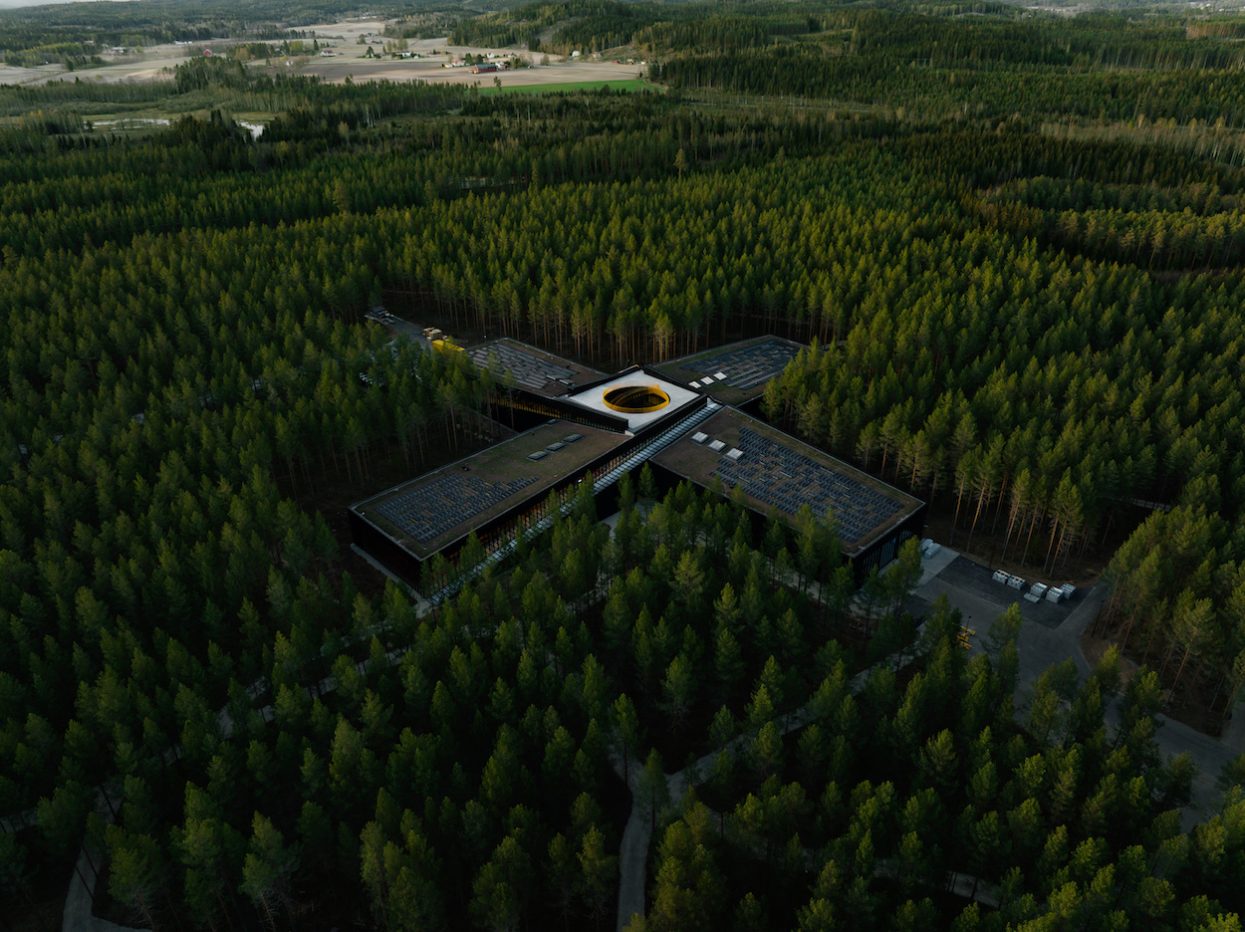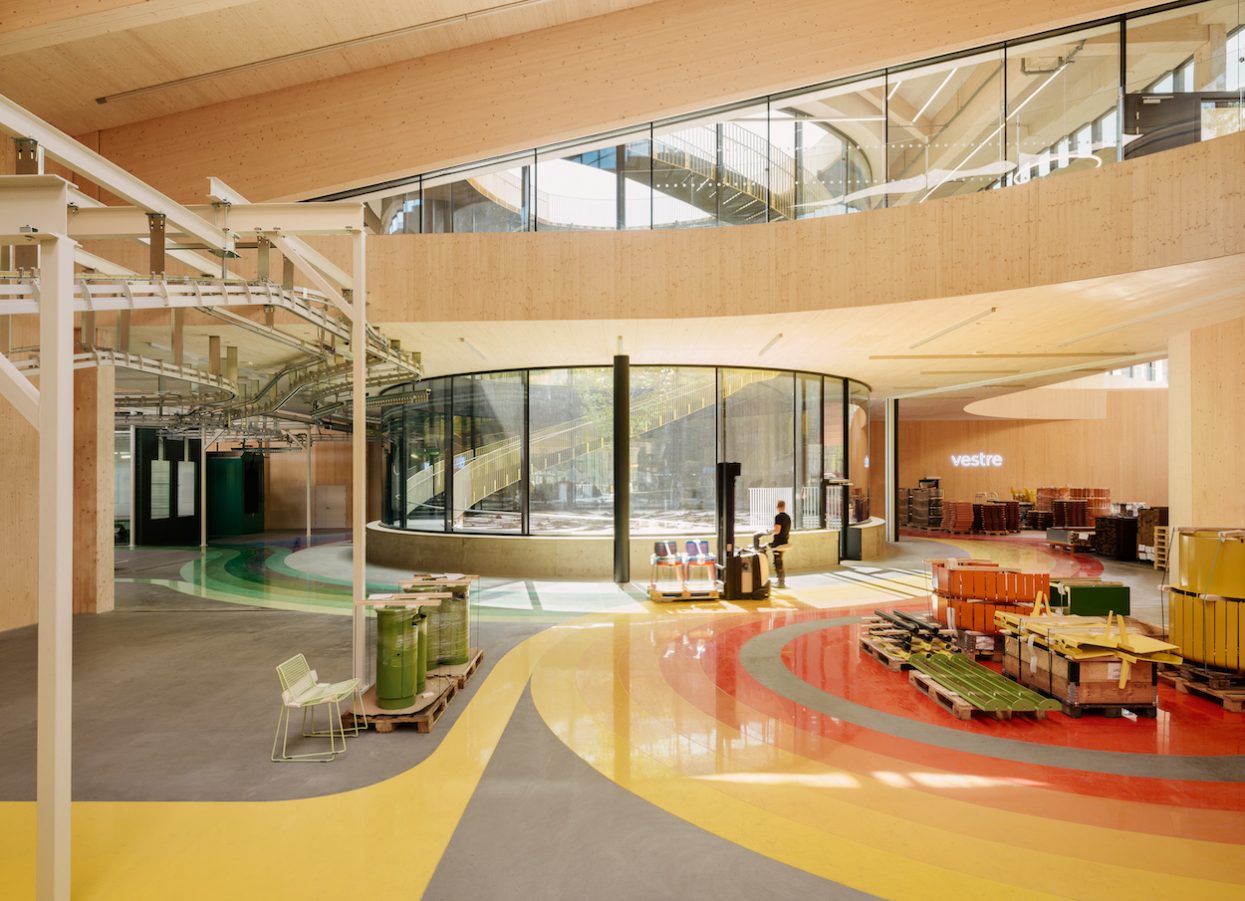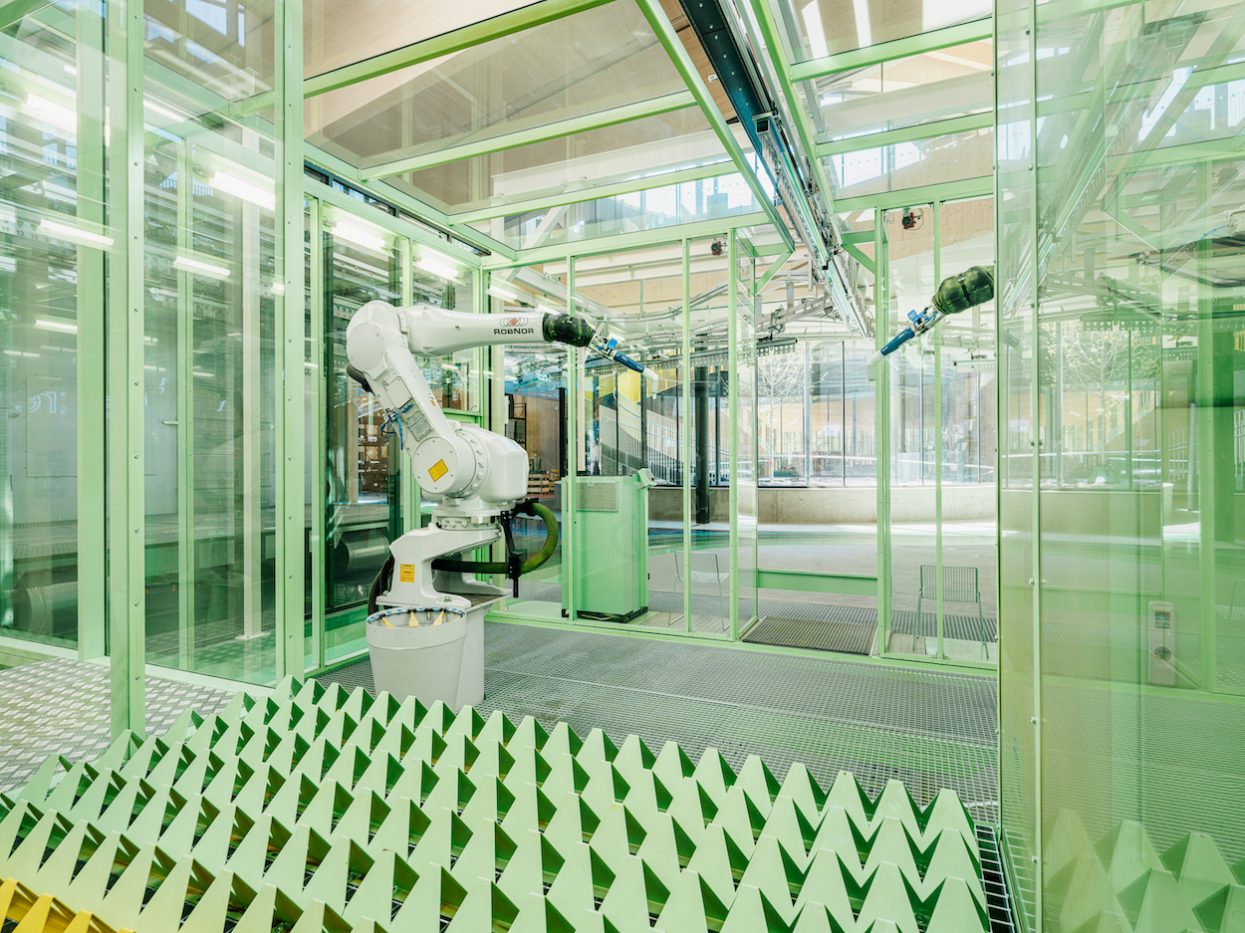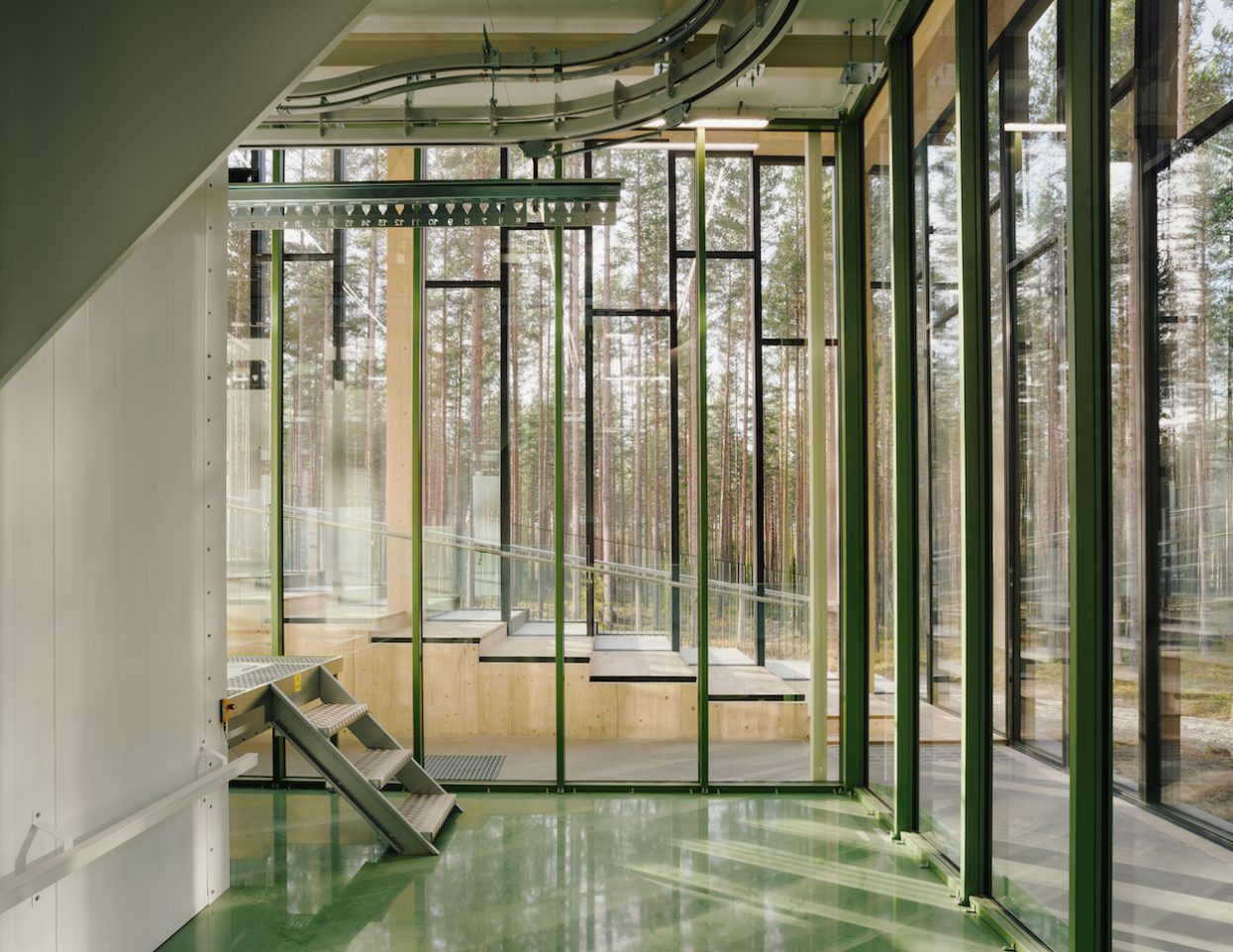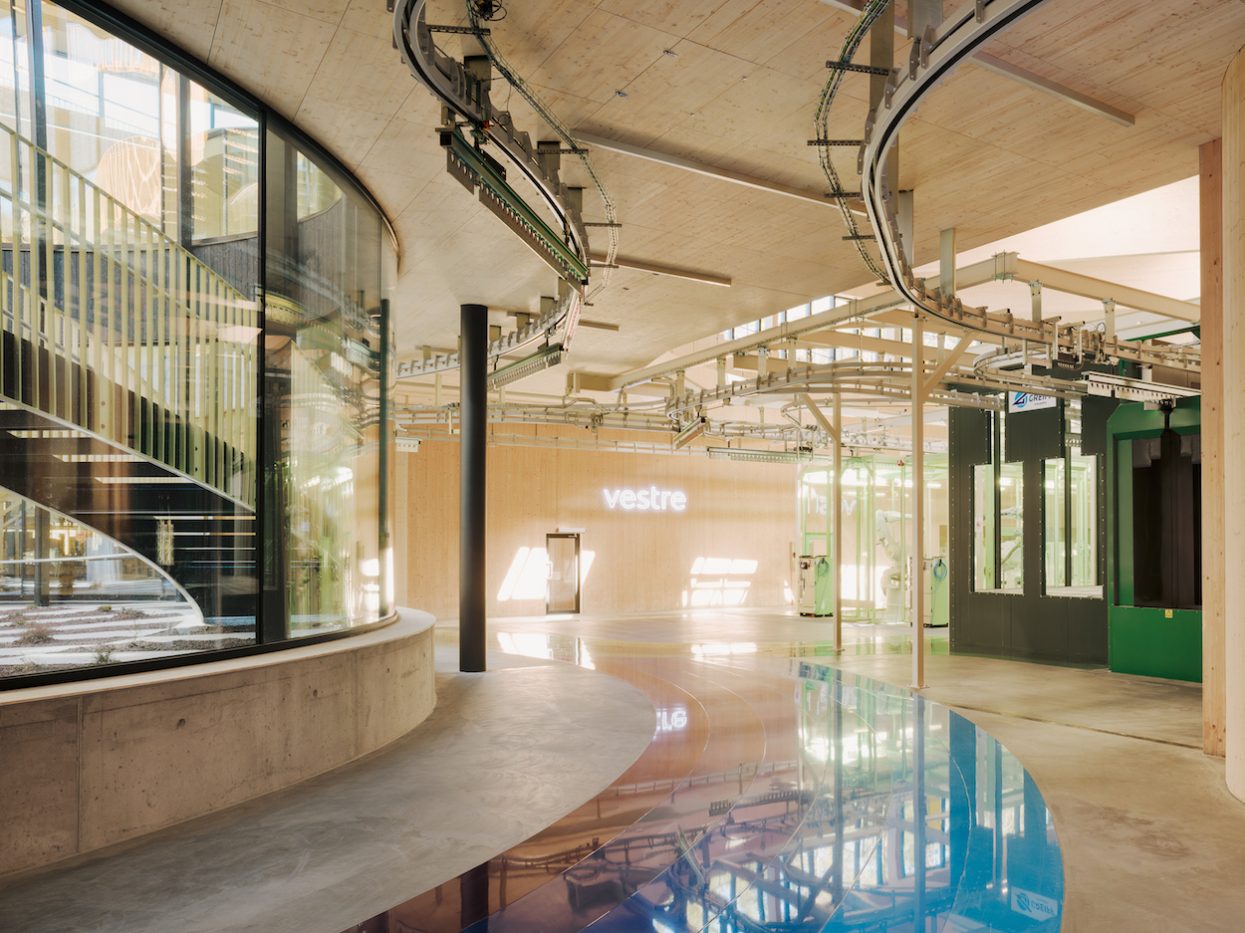“Man-made climate change is the biggest challenge of our time,” says Jan Christian Vestre, the former CEO of the Norwegian outdoor furniture brand that bears his last name. When he took the helm at Vestre before being appointed Norway’s Minister of Trade and Industry, the company has been on a mission to become the world’s most sustainable furniture manufacturer by pivoting to 100 percent renewable energy and producing furniture using Nordic steel, which doesn’t rust and uses 30 percent less emissions than the global average. Two years ago, he announced plans for Vestre to build a state-of-the-art factory by Bjarke Ingels Group in the Nordic countryside that aims to be an exemplar of sustainable architecture and the first building of its type to achieve BREEAM Outstanding certification.
That factory is now complete. The Plus is a 75,000-square-foot facility that not only provides a closer look inside Vestre’s efficient production, but offers an experiential destination. BIG devised a plus-shaped structure divided into four wings with different production areas—the color factory, wood factory, assembly, and warehouse—surrounding a central courtyard. At its heart is a visitor center where guests are free to learn more about Vestre’s energy production, water purification, and production life cycles firsthand, eschewing most industrial buildings that are fenced off to non-employees. It’s also a tribute to Norway’s Right to Roam (“Allemannsretten”), a law that allows everyone to roam free on uncultivated land.
“The task of creating a sustainable, accessible, colorful production facility with a public park felt like designing a whole new typology,” says Viktoria Millentrup, project lead at BIG. “Manufacturing facilities are still thought of as fenced-off buildings polluting the environment. I’m excited that The Plus is a prototype for the green transition, proving that manufacturing can be sustainable, social, local, and profitable at the same time—and raising the all-important question: What would happen to the planet if all industrial buildings followed this concept?”
First established in 1990, the Building Research Establishment Environmental Assessment Method (BREEAM) evaluates the impact of buildings using multiple scientifically based metrics, including energy and water use, pollution, materials, waste, and ecology. Essentially, it sets standards for the performance of buildings from concept to creation while providing a framework that helps both designers and end users adopt eco-friendly solutions that offset the environmental toll of construction. Buildings are certified on a scale of “Pass” to “Outstanding,” a hard-to-achieve rating that accounts for less than one percent of new non-domestic buildings. For perspective, no industrial projects in the Nordic region have come close to qualifying as Outstanding.
The Plus aims to achieve BREEAM Outstanding by using materials such as local timber and low-carbon concrete, as well as an energy supply system that combines 900 solar panels on a forested roof with geothermal walls. Its energy composition is 60 percent lower compared to conventional factories while emitting 55 percent fewer greenhouse gases. Equidistant between the brand’s Oslo headquarters and its Snøhetta-designed manufacturing plant in Torsby, Sweden, The Plus will connect to both via a fleet of electric Tesla trucks that will shuttle between the three locations.
